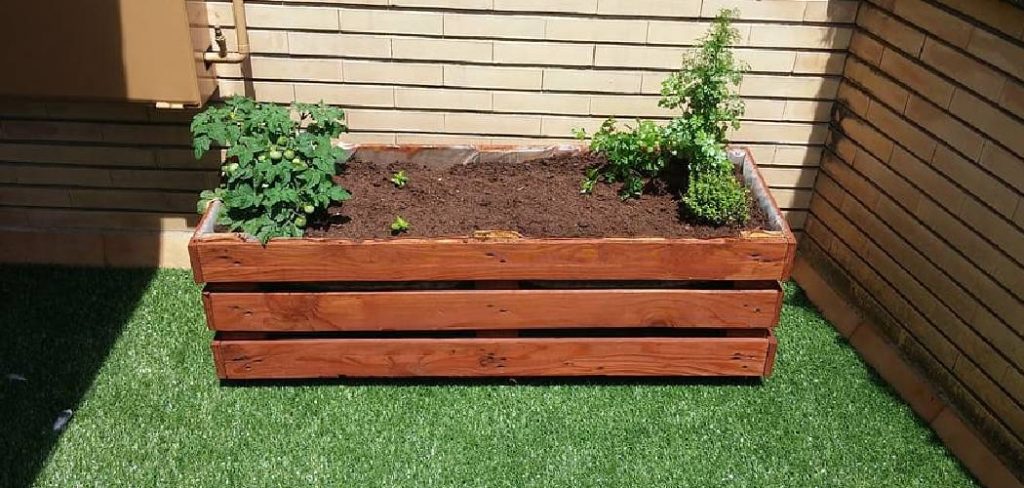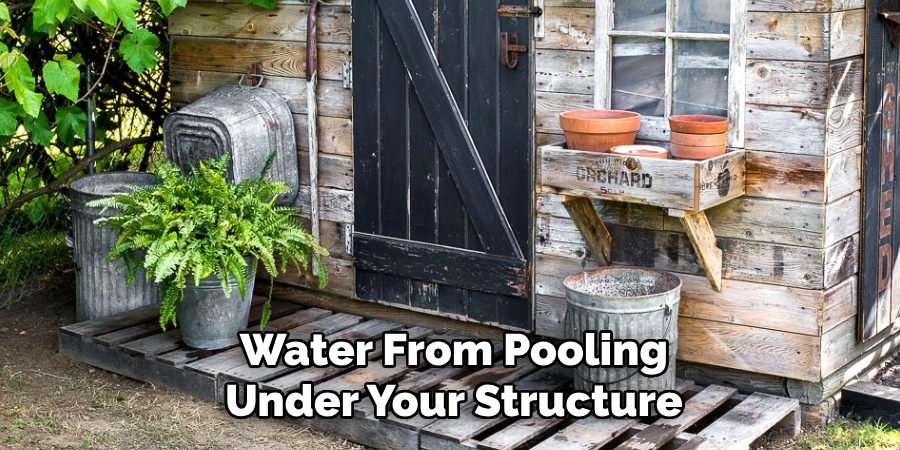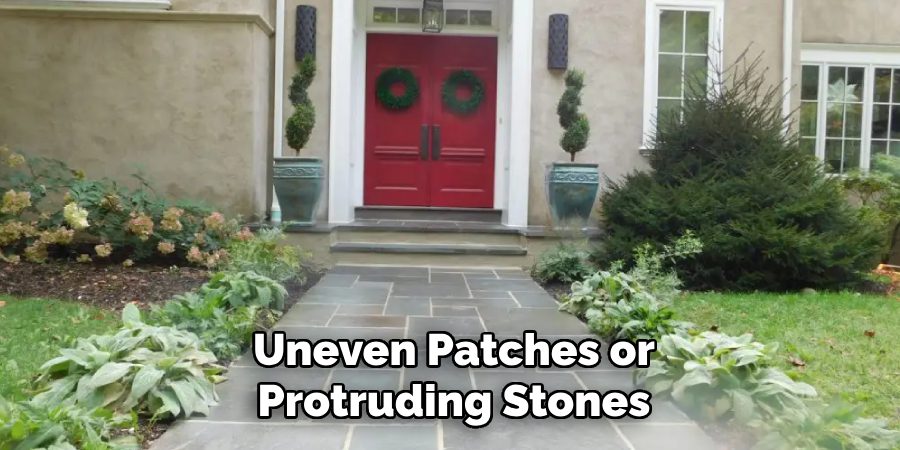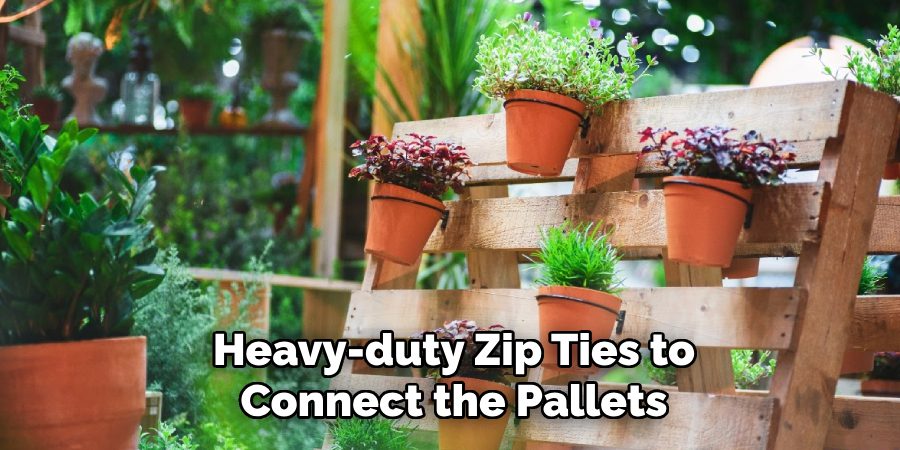Building a patio out of pallets is an affordable and eco-friendly way to create a functional and inviting outdoor living space. Pallets are cost-effective, readily available, and highly versatile, making them an excellent choice for DIY enthusiasts. By repurposing wooden pallets, you save money and contribute to reducing waste, making this project both budget-conscious and environmentally friendly. Additionally, constructing a patio with pallets requires minimal tools and expertise, making it an ideal home improvement project for beginners.

This guide will walk you through step-by-step instructions on how to make a patio out of pallets. From selecting the right pallets to preparing the ground, assembling the structure, and adding stylish finishing touches, you’ll find everything you need to create your own customized pallet patio. Whether you want to enhance your backyard or create a dedicated space for relaxation, this sustainable DIY solution is both practical and rewarding.
Choosing and Preparing the Pallets
Selecting the Right Pallets
Choosing the correct pallets is essential for building a durable and safe patio. Opt for heat-treated (HT) pallets designed to withstand outdoor conditions without being chemically treated. Avoid methyl bromide (MB) pallets, as they are treated with chemicals that may pose health risks and are unsuitable for residential use. Inspect the pallets for any labeling to ensure safety and durability before use.
Checking for Damage and Strength
Before using the pallets, carefully examine each one for structural integrity. Look for signs of rot, mold, or cracks, as damaged pallets can compromise the stability of your patio. Check that all boards are securely attached and that no nails or sharp edges protrude. Taking the time to select strong and intact pallets will ensure a sturdier and longer-lasting structure.
Cleaning and Sanding
To prepare the pallets, thoroughly clean them to remove dirt, debris, or any residues. This can be done with soap, water, and a scrub brush. Once clean and dry, sand down any splinters, rough patches, or sharp edges to create a smooth surface. This not only enhances the appearance of your pallets but also ensures the safety of anyone using the patio. Proper preparation will set the foundation for a successful project.
Planning and Measuring the Patio Space
Selecting the Location

Choosing the right location is critical for building a durable and functional pallet patio. Look for a level surface with sufficient drainage to prevent water from pooling under your structure. Avoid areas prone to flooding or excessive moisture, as these conditions can lead to rot and weaken your pallets over time. Remember accessibility and proximity to your home or garden to ensure the patio suits your needs and lifestyle.
Measuring and Layout Design
Carefully measure the space where you plan to build your pallet patio. Use a tape measure to determine the length and width of the area and calculate the total square footage. Knowing this measurement will help you decide how many pallets you need for the project. Standard pallets are typically 48 by 40 inches, so plan your layout to use the materials best available. Also, consider how the design will accommodate furniture or additional decorative features.
Marking the Patio Area
Once your measurements are complete, use stakes and string to outline the patio’s layout on the ground clearly. This step ensures that your design is aligned correctly and provides a visual guide as you assemble the pallets. Double-check your alignment and spacing to prevent any issues once construction begins.
Preparing the Ground for the Patio
Properly preparing the ground before assembling your pallet patio ensures stability and durability. Follow these steps to create a solid foundation for your project.
Step 1: Clearing Grass and Debris
Begin by removing all grass, rocks, and debris from the designated area. Use a garden spade or shovel to dig up grass and roots, ensuring the surface is clear. Check for any uneven patches or protruding stones that could affect the leveling process. This step establishes a clean slate for the patio and prevents unwanted growth beneath the structure.
Step 2: Creating a Level Base
Once the area is cleared, use a shovel and rake to flatten the surface. Creating an even base is crucial, as an uneven foundation can lead to instability in the patio structure. After leveling, consider adding a layer of sand or gravel to enhance the patio’s stability. Spread the material evenly across the area and tamp it down firmly using a tamper or flat surface. This extra layer helps to prevent shifting and provides additional support for the pallets.

Step 3: Installing a Weed Barrier
To prevent weeds from growing beneath your patio, lay down a landscape fabric across the entire area. This barrier is an effective block for weeds while allowing for proper drainage. Secure the fabric in place by using landscape staples or weights around the edges to ensure full coverage. A weed barrier ensures minimal maintenance, and your patio stays clean and tidy over time.
How to Make a Patio out Of Pallets: Assembling the Pallet Patio
Step 1: Arranging the Pallets
Begin by placing the pallets in your desired pattern and alignment over the prepared base. Standard layouts include square or rectangular arrangements but feel free to get creative with the size and shape of your space. Ensure the pallets are evenly spaced, and their edges align for a polished and cohesive look. Use a level to confirm that each pallet is flat and properly positioned to avoid uneven surfaces on your patio.
Step 2: Securing the Pallets Together
Once the pallets are arranged, secure them to prevent movement or separation over time. Use screws, metal brackets, or even heavy-duty zip ties to connect the pallets along their edges. If using screws, ensure they are long enough to hold the pallets firmly together without splitting the wood. Metal brackets may provide additional stability, especially for patios holding heavier furniture or decor. Take the time to double-check all connections for security and durability.
Step 3: Checking for Stability
After securing the pallets, inspect the patio thoroughly for stability. Walk across the surface to identify any wobbly or uneven areas. Adjust the placement or add shims to level them out if you find uneven spots. A stable and level foundation ensures your patio is safe and durable for frequent use. Taking the time to verify stability at this stage will go a long way in guaranteeing a polished and well-constructed pallet patio.

Customizing and Enhancing the Patio
After ensuring the stability of the pallet patio, it’s time to customize and enhance its appearance and functionality. Begin by painting or staining the pallets to match your style and environment. Opt for weather-resistant paint or stain to increase the durability of the wood while adding aesthetic appeal. This step allows you to coordinate colors with the surrounding landscape or create a bold visual statement.
Apply a weatherproof sealant to protect your patio against the elements and extend its lifespan. This layer of protection helps prevent moisture damage, warping, and decay, ensuring your patio remains in excellent condition even after exposure to rain or sunlight.
For a smoother and more cohesive surface, consider adding a decking layer. Placing plywood or outdoor mats over the pallets can provide a level and comfortable flooring option, making it easier to set furniture or walk barefoot across the patio.
For a polished and functional upgrade, consider installing railings or steps. Railings provide safety and structure, particularly for raised patios. Meanwhile, steps can improve accessibility and blend seamlessly with the overall design. Incorporate these additional features as needed to create a patio space tailored to your specific needs and preferences.
Maintaining Your Pallet Patio
Protecting the Wood from Weather
To ensure the longevity of your pallet patio, applying waterproofing treatments annually is essential. These treatments protect the wood from moisture, preventing warping, rot, and weather-related damage. Choose a high-quality sealant designed for outdoor wooden surfaces and reapply it each year to maintain its protective barrier.
Regular Cleaning and Repairs
Routine cleaning is vital for keeping your patio looking its best. Sweep away debris, such as leaves and dirt, to prevent wood discoloration and decay. Use a mild, soapy solution to wash the surface periodically, ensuring it remains free from stains and residue. Additionally, check for any loose or damaged boards. Repair these promptly to maintain the patio‘s structural integrity and avoid accidents.
Preventing Pest Infestations
Protecting your pallet patio from pests, such as termites or ants, is another critical step in its maintenance. Regularly inspect the wooden surface for signs of damage or infestation, such as small holes or sawdust. Treat the wood with pest-resistant products as a preventive measure and seal any cracks where insects might gain entry. These steps will help keep your patio both beautiful and secure for years to come.

Conclusion
Creating a pallet patio is a rewarding and practical DIY project. The process involves selecting sturdy pallets, preparing the ground to ensure a level foundation, assembling the pallets into your desired layout, and customizing the design to suit your taste.
This budget-friendly, sustainable project fosters creativity, making it an ideal choice for homeowners looking to enhance their outdoor space. Regular maintenance, such as cleaning, sealing, and pest prevention, will significantly extend the patio’s lifespan and keep it looking its best. By following these steps on how to make a patio out of pallets, you’ll enjoy a unique and inviting outdoor retreat for years to come.

Professional Focus
Oliver Wood, a passionate patio designer, specializes in creating comfortable and inviting outdoor spaces that enhance relaxation and entertainment. His work combines a deep understanding of design with a love for nature, making him a standout professional in the field of outdoor living spaces. Through his thoughtful approach, he transforms everyday patios into extraordinary retreats for family and friends.
About the Author
Oliver Wood, a skilled patio designer, shares his expertise on outdoor living through his designs and insights. With a background in patio design and a genuine passion for creating beautiful spaces, he encourages others to invest in their outdoor environments, enhancing their homes with functional and inviting spaces for relaxation and entertainment.
Education History
University: Virginia Union University
Oliver’s education equipped him with the knowledge and skills to design patios that merge aesthetics with comfort, transforming outdoor areas into beautiful extensions of the home.
Expertise:
- Patio Design and Outdoor Living Spaces
- Functional and Aesthetic Landscaping
- Comfortable and Inviting Outdoor Environments
- Design Philosophy for Family-Oriented Spaces
- Creating Spaces for Relaxation and Entertainment
